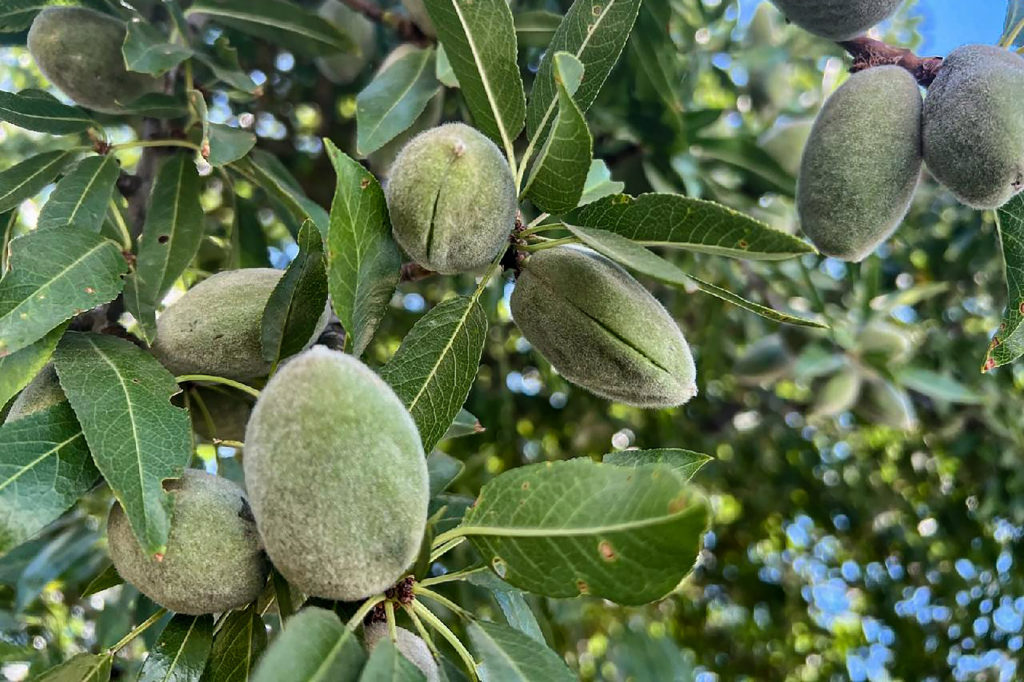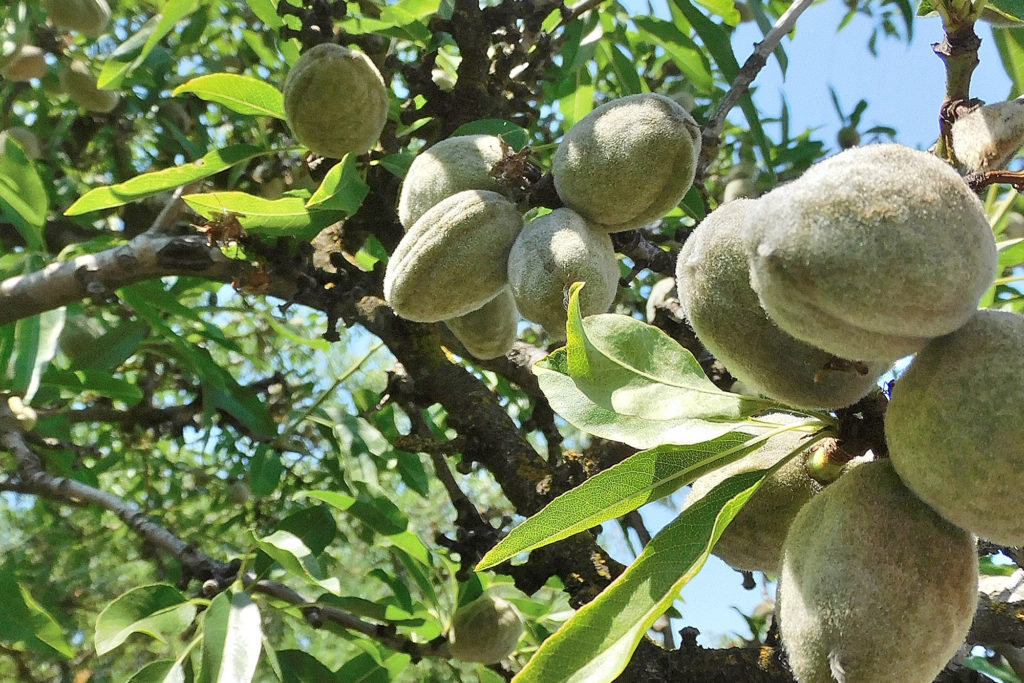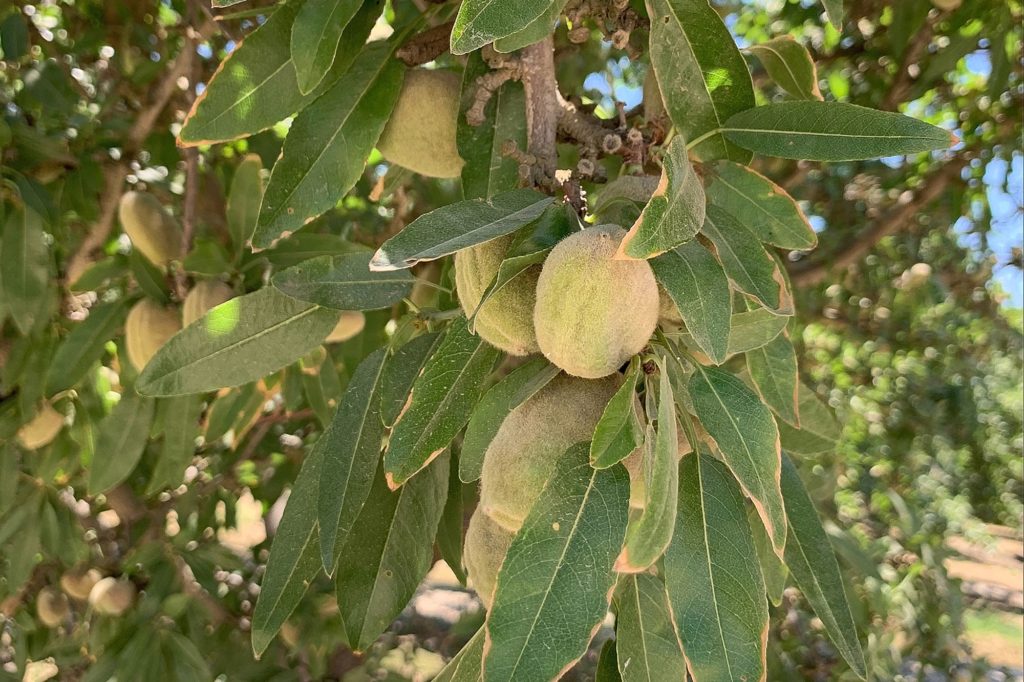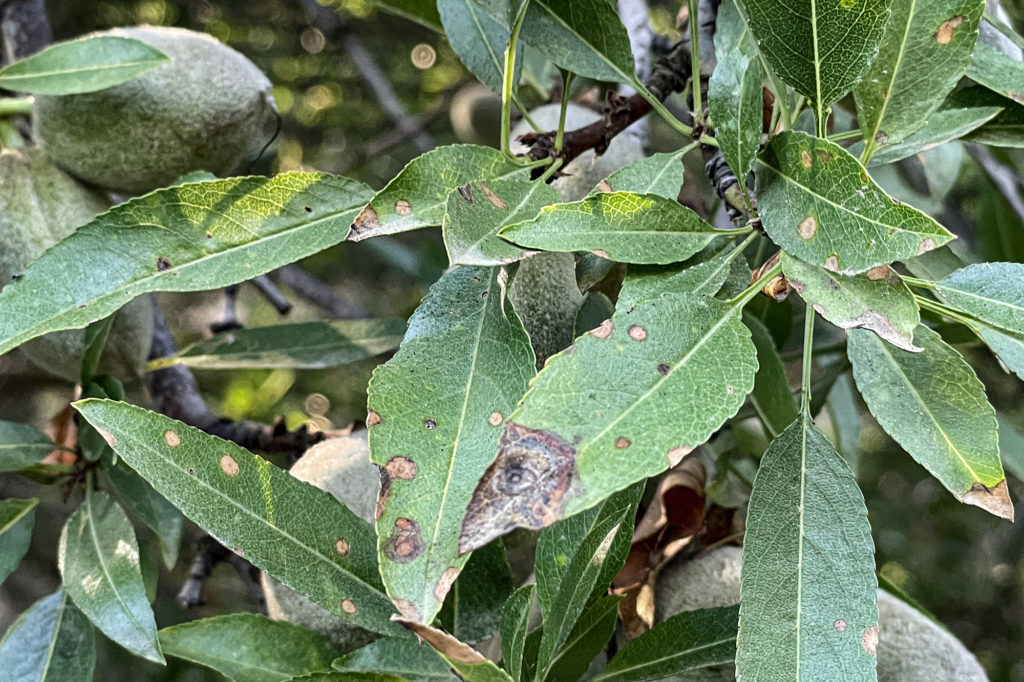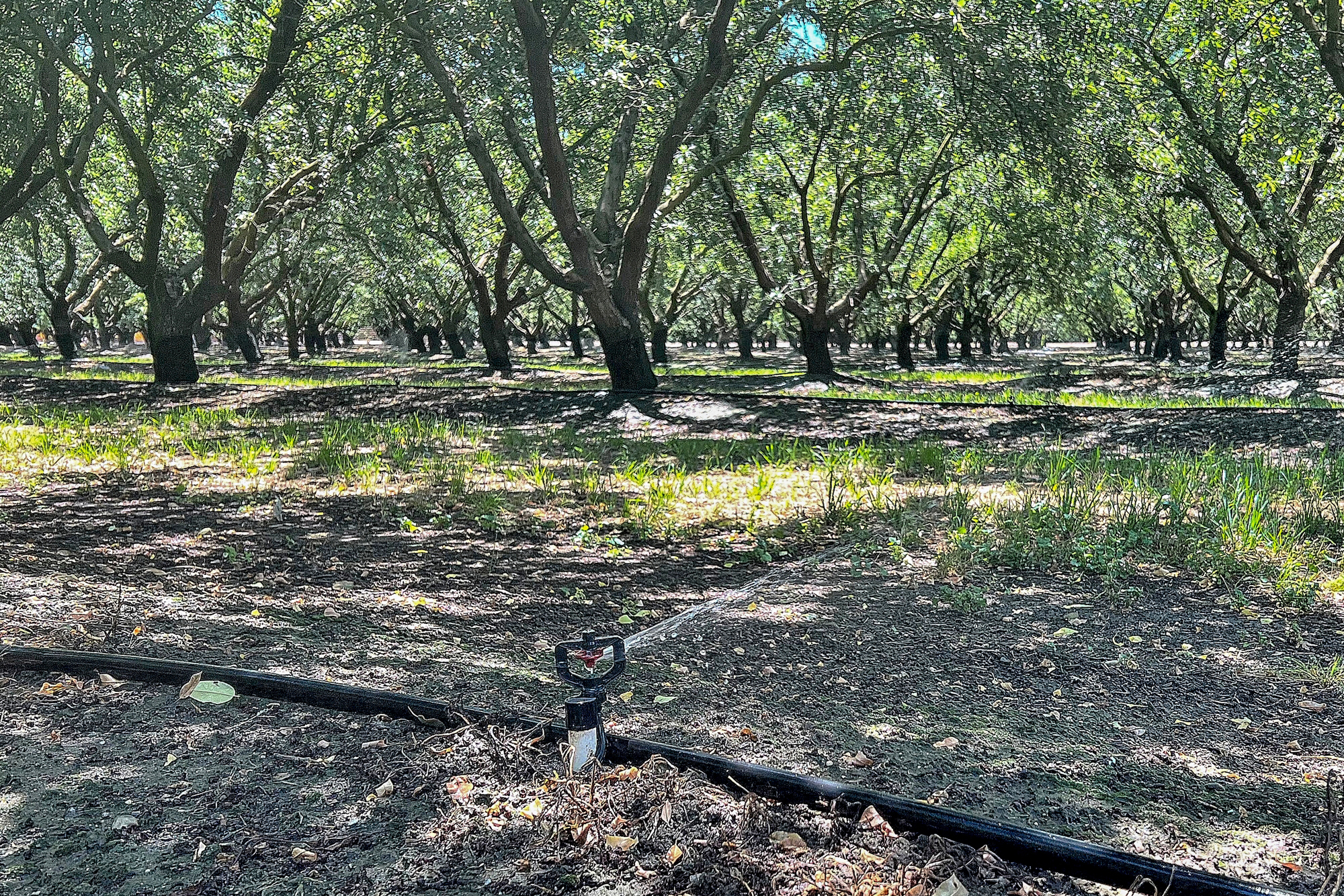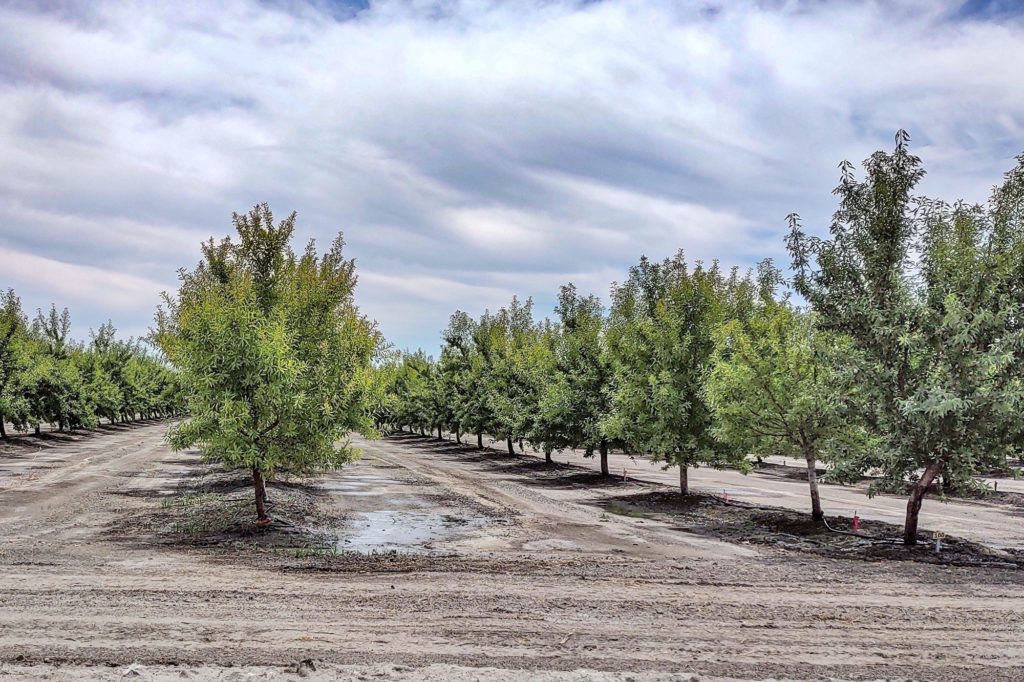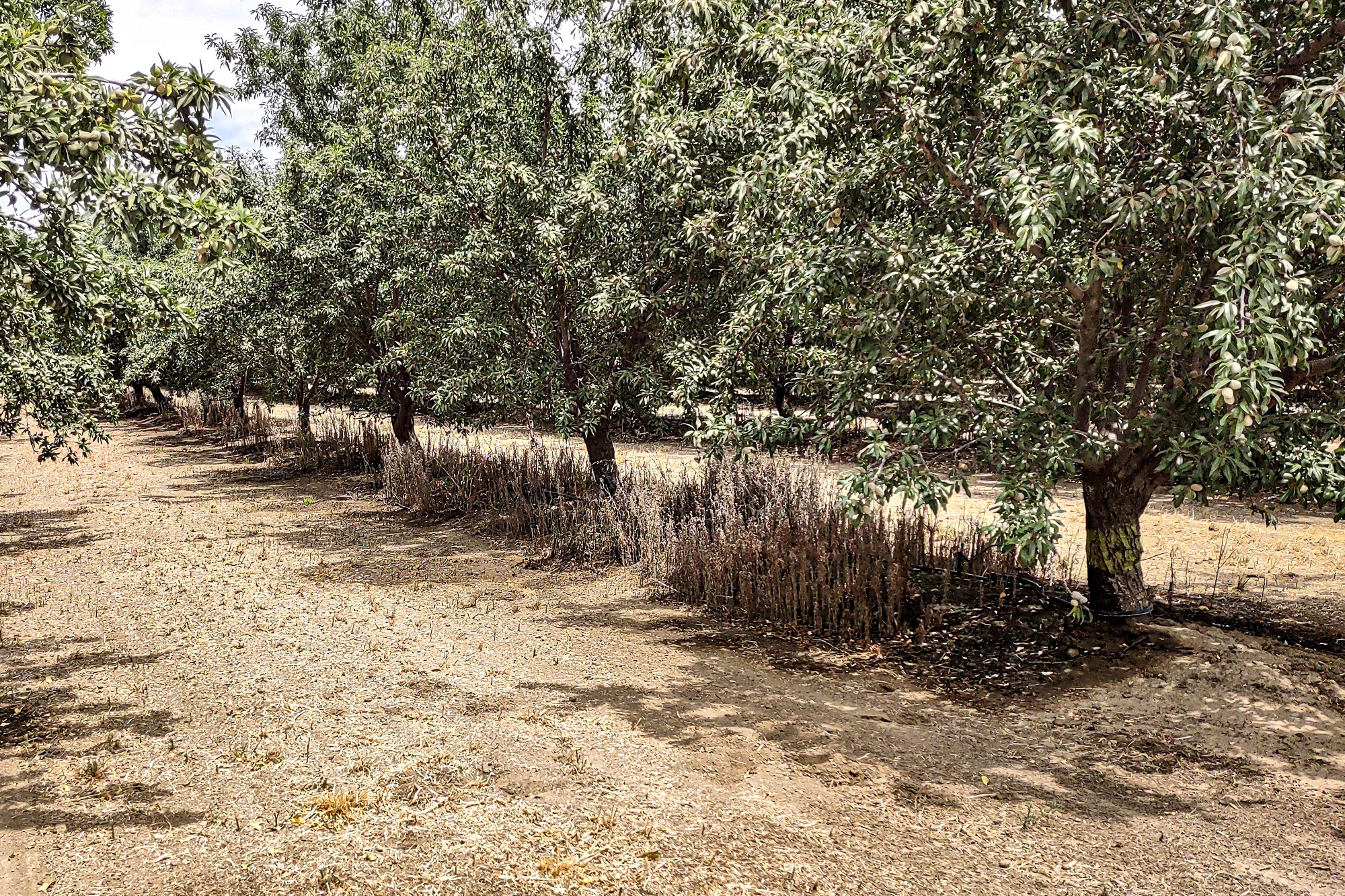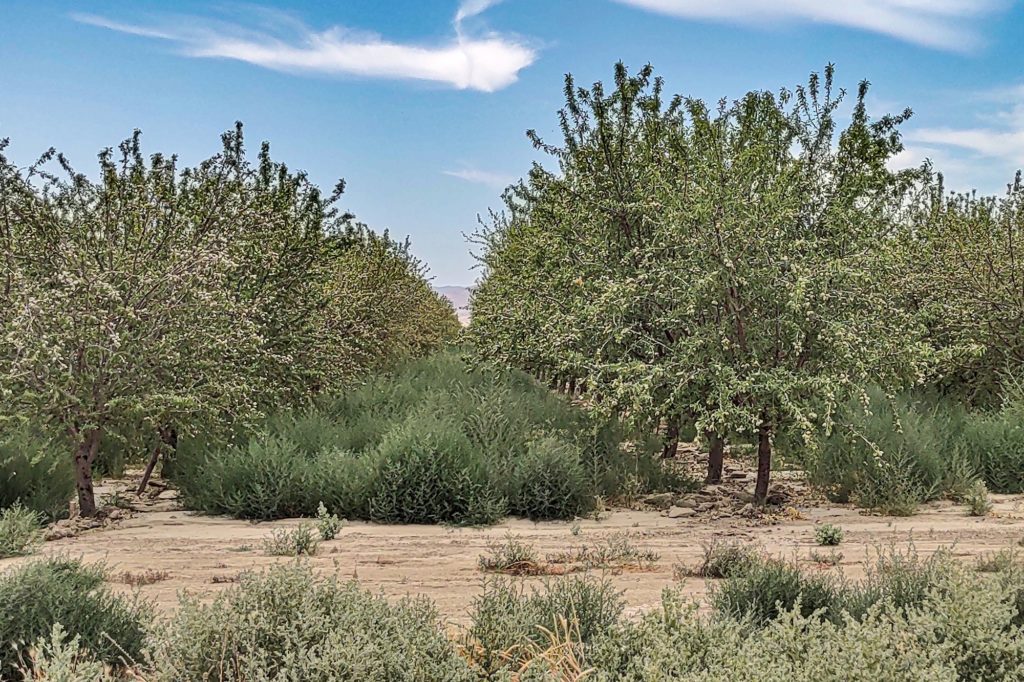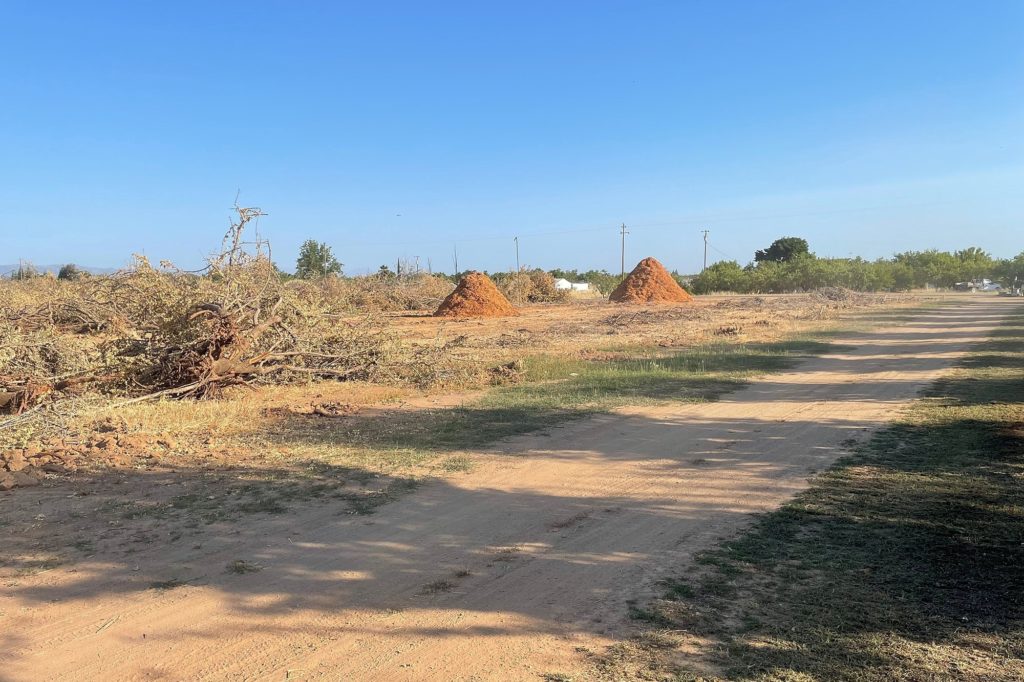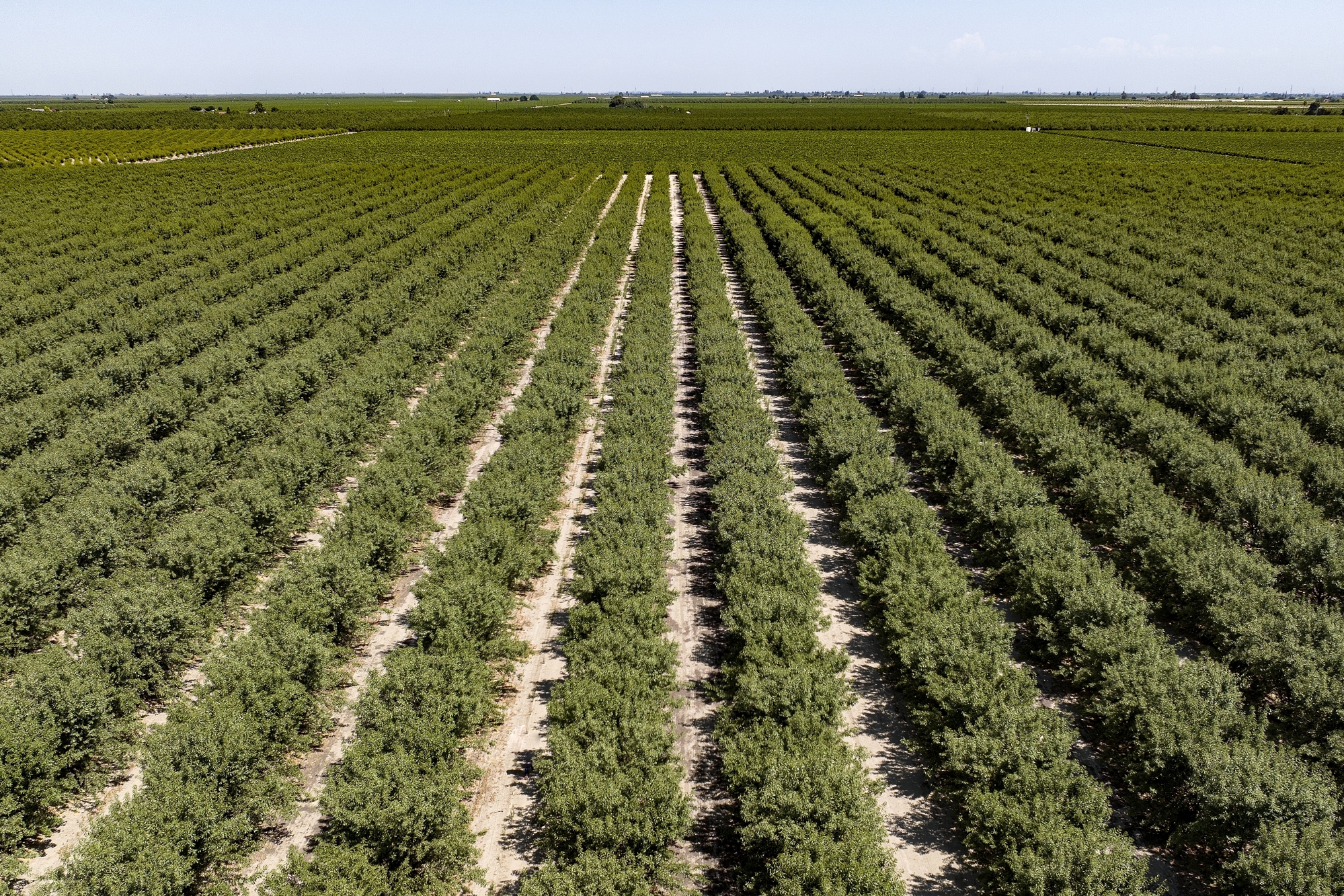
This report covers conditions and observations made between Tuesday, May 30 and Sunday, July 2, 2023. The next scheduled report will be posted on Monday, July 31, 2023. In the event of any significant occurrences prior to that date, this site will be updated as soon as possible.
Mild conditions dominated the weather in the Central Valley during nearly the entire month of June as a succession of weak low-pressure systems influenced California’s weather. Daily maximum temperatures were widely reported between the mid-70’s and mid-90’s in all growing areas, as much as 10 degrees below seasonal norms. Morning lows were also reported as rather cool levels, ranging from the mid-40’s to mid-50’s for much of the period. However, conditions took a dramatic turn in the period’s closing days as a high-pressure system moved over the state driving day-time highs to nearly 110 degrees.
Irrigation and preparations for the coming harvest dominated grower activities during June. The unseasonably mild temperatures helped to mitigate orchard water requirements. However, observers are reporting that growers worked to time irrigations during the final week of the period to ensure adequate moisture levels in the root zones as the temperatures climbed and water requirements increased.
As shown in the accompanying photos, the first signs of hull split were reported in advanced plantings along the west side of the San Joaquin Valley during the final week of the period. Growers and the Pest Control Advisors (PCAs) have been on the lookout for hull split in blank nuts, those in which the kernel failed to develop. Blanks typically split approximately two weeks ahead of “sound” nuts that contain fully developed kernels and thus serve as an indicator of the hull split and proper timing for Navel Orange Worm (NOW) mitigation measures. Growers and PCAs have noted increasing moth capture in traps used to monitor the NOW life cycle development ahead of the split. Treatments to control NOW are timed to the hull split, which typically occurs in the first days of July in early harvesting varieties. This year’s cooler temperatures have reduced the pace of crop development, leading many to believe that the crop is running 10 to 14 days later than “normal”. Finding split in blank nuts is the first in-orchard indication of the approaching harvest and the proper timing for NOW controls. PCAs will be watching orchards closely over the next few weeks as the uncomfortably hot temperatures can impact insect and crop development, complicating treatment timing decisions.
Growers have begun applications of ant bait formulations in orchards with excessive populations of damaging species. Ants can cause significant crop losses during the harvest while the crop lay on the ground to dry after shaking. Baits are designed to eliminate egg laying within the ant colonies, thus reducing the population over time. This requires that applications begin ahead of the harvest to provide enough time to be effective.
As noted in our last report, observers have noted a number of “shaggy” orchards this year as growers altered their normal weed control activities in an effort to reduce costs. Growers are now working to reduce any excess vegetation within the orchards as they prepare for harvest. In some cases, weed growth within the tree row will present challenges as sweepers move the crop from under the trees.
Observers are reporting that orchards are generally in good condition, owing to the adequate water available for irrigation this year and heavy winter rains that leached salts accumulated within the root zones due to the use of poor-quality ground water over the past few years. However, problems still exist in orchards dependent on groundwater as the effects of salt accumulation and high pH water have been observed. Increasing spider mite populations have been noted in the southern San Joaquin Valley, along with leaf loss caused by Alternaria Leaf Spot.
Observers have also noted that orchard removal operations continue. Orchards can be found in all areas waiting to be pulled as removal organizations work through a backlog of work. In some cases, orchards have harvestable crops, but stand abandoned waiting for machinery to arrive to pull and grind the trees.
Over the coming weeks, pest management work will intensify as the hull split progresses. Treatment to control NOW and ants will continue, timed to the crop’s development and anticipated harvest timing. Irrigation and vegetation management will also increase in importance as growers work to prepare for harvest.
By Mel Machado, Vice President of Member Relations
Photos By: Christine Ivory, John Aja, Ben Goudie, KC Clendenin, Ashley Correia, and Mel Machado

